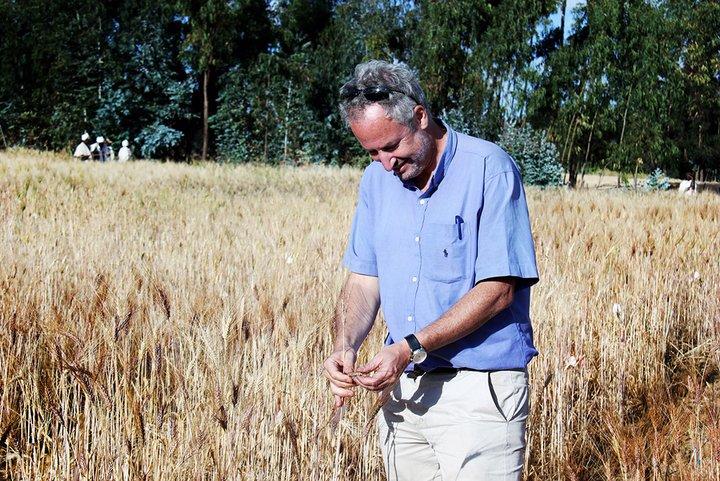Can ancient Ethiopian wheat varieties provide resistance to stem rust?

Interviewed by Süddeutsche Zeitung, Bioversity International scientist Carlo Fadda explains how Ethiopian durum wheat offers a unique and not fully explored source of genetic diversity that can provide resistance to diseases and climatic stresses.
Interviewed by Süddeutsche Zeitung, Bioversity International scientist Carlo Fadda explains how Ethiopian durum wheat offers a unique and not fully explored source of genetic diversity that can provide resistance to diseases and climatic stresses.
Ethiopia is one of the crop centres of diversity - areas first identified by Russian scientist Nicolai Vavilov in the 1920s, where a high degree of genetic diversity can be found.
Durum wheat has been cultivated and selected by farmers in these areas for millennia. As a result, Ethiopia offers a unique and not fully explored source of genetic diversity that can provide resistance to diseases and climatic stresses.
A reportage published in the largest German newspaper, the Süddeutsche Zeitung, explores the threat posed by stem rust, one of the most dangerous wheat diseases that is particularly affecting Africa. Featured in the reportage, scientist Carlo Fadda explains how Bioversity International and partners are studying the rich genetic diversity of durum wheat in Ethiopia, and bringing it back to farmers' fields.
"The varieties that we are studying are old farmers' varieties that we have retrieved from the Ethiopian national genebank. Farmers are now testing these varieties in their own fields, and many are showing resistance or tolerance to stem rust", explains Fadda to Süddeutsche Zeitung.
Watch the reportage (in German and French)
________________
This work in Ethiopia is part of a larger Bioversity International initiative, called 'Seeds for Needs', which works with more than 20,000 smallholder farmers in 11 countries to research how crop diversity can minimize the risks associated with climate change. The concept is simple - if farmers have better information and access to a wide range of varieties, they are more able to choose what best suits their conditions to cope with unpredictable weather and pests and disease outbreaks.
Photo: Bioversity International scientist Carlo Fadda in a durum wheat test plot in Ethiopia. Credit: Bioversity International
